Related Research Articles

Henri-Robert-Marcel Duchamp was a French painter, sculptor, chess player, and writer whose work is associated with Cubism, Dada, and conceptual art. He is commonly regarded, along with Pablo Picasso and Henri Matisse, as one of the three artists who helped to define the revolutionary developments in the plastic arts in the opening decades of the 20th century, responsible for significant developments in painting and sculpture. He has had an immense impact on 20th- and 21st-century art, and a seminal influence on the development of conceptual art. By the time of World War I, he had rejected the work of many of his fellow artists as "retinal", intended only to please the eye. Instead, he wanted to use art to serve the mind.
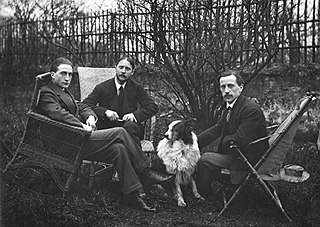
Jacques Villon, also known as Gaston Duchamp, was a French Cubist and abstract painter and printmaker.
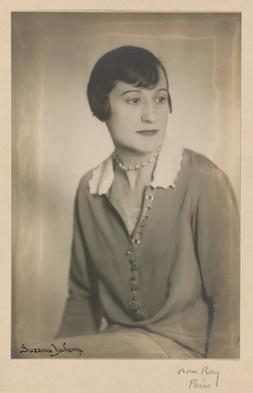
Suzanne Duchamp-Crotti was a French Dadaist painter, collagist, sculptor, and draughtsman. Her work was significant to the development of Paris Dada and modernism and her drawings and collages explore fascinating gender dynamics. Due to the fact that she was a woman in the male prominent Dada movement, she was rarely considered an artist in her own right. She constantly lived in the shadows of her famous older brothers, who were also artists, or she was referred to as "the wife of." Her work in painting turns out to be significantly influential to the landscape of Dada in Paris and to the interests of women in Dada. She took a large role as an avant-garde artist, working through a career that spanned five decades, during a turbulent time of great societal change. She used her work to express certain subject matter such as personal concerns about modern society, her role as a modern woman artist, and the effects of the First World War. Her work often weaves painting, collage, and language together in complex ways.
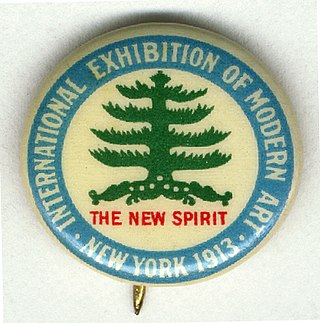
The 1913 Armory Show, also known as the International Exhibition of Modern Art, was organized by the Association of American Painters and Sculptors. It was the first large exhibition of modern art in America, as well as one of the many exhibitions that have been held in the vast spaces of U.S. National Guard armories.

A dollhouse or doll's house is a toy house made in miniature. Since the early 20th century dollhouses have primarily been the domain of children, but their collection and crafting is also a hobby for many adults. English-speakers in North America commonly use the term dollhouse, but in the United Kingdom and other English-speaking countries the term is doll's house. They are often built to put dolls in.

Gaston Lachaise was a French-born sculptor, active in America in the early 20th century. A native of Paris, he is most noted for his female nudes such as his heroic Standing Woman. Gaston Lachaise was taught the fundamentals of European sculpture while living in France. While still a student, he met and fell in love with an older American woman, Isabel Dutaud Nagle, then followed her after she returned to America. There, he became profoundly impressed by the great vitality and promise of his adopted country. Those life-altering experiences clarified his artistic vision and inspired him to define the female nude in a new and powerful manner. His drawings, typically made as ends in themselves, also exemplify his remarkably new treatment of the female body.

Fountain is a readymade sculpture by Marcel Duchamp in 1917, consisting of a porcelain urinal signed "R. Mutt". In April 1917, an ordinary piece of plumbing chosen by Duchamp was submitted for the inaugural exhibition of the Society of Independent Artists, to be staged at the Grand Central Palace in New York. When explaining the purpose of his readymade sculpture, Duchamp stated they are "everyday objects raised to the dignity of a work of art by the artist's act of choice." In Duchamp's presentation, the urinal's orientation was altered from its usual positioning. Fountain was not rejected by the committee, since Society rules stated that all works would be accepted from artists who paid the fee, but the work was never placed in the show area. Following that removal, Fountain was photographed at Alfred Stieglitz's studio, and the photo published in the Dada journal The Blind Man. The original has been lost.

Nude Descending a Staircase, No. 2 is a 1912 painting by Marcel Duchamp. The work is widely regarded as a Modernist classic and has become one of the most famous of its time. Before its first presentation at the 1912 Salon des Indépendants in Paris it was rejected by the Cubists as being too Futurist. It was then exhibited with the Cubists at Galeries Dalmau's Exposició d'Art Cubista, in Barcelona, 20 April – 10 May 1912. The painting was subsequently shown, and ridiculed, at the 1913 Armory Show in New York City.

Société Anonyme, Inc. was an art organization founded in 1920 by Katherine Dreier, Man Ray and Marcel Duchamp. The society sponsored lectures, concerts, publications, and exhibitions of modern art, including the International Exhibition of Modern Art at the Brooklyn Museum in 1926. Between 1920 and 1940 they held 80 exhibitions showing mostly Cubist and abstract art. Their galleries in their "first modest headquarters" were at 19 East 47th Street.
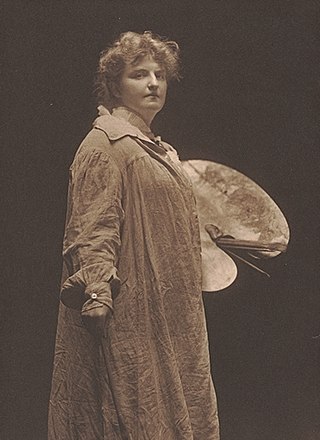
Katherine Sophie Dreier was an American artist, lecturer, patron of the arts, and social reformer. Dreier developed an interest in art at a young age and was afforded the opportunity of studying art in the United States and in Europe due to her parents' wealth and progressive attitudes. Her sister Dorothea, a Post-Impressionist painter traveled and studied with her in Europe. She was most influenced by modern art, particularly by her friend Marcel Duchamp, and due to her frustration with the poor reception that the works received, she became a supporter of other artists. She was co-founder of the Society of Independent Artists and the Société Anonyme, which had the first permanent collection of modern art, representing 175 artists and more than 800 works of art. The collection was donated to Yale University. Her works were exhibited in Europe and the United States, including the 1913 International Exhibition of Modern Art.
Mary A. Bell (1873–1941) was an African-American artist and illustrator. She produced over 150 known works featuring mostly women of all classes and races in their daily lives. She was little known during her life, but became more prominent after a showcase of her art at Yale University in the 1980s.
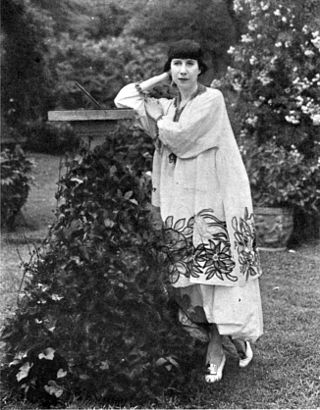
Florine Stettheimer was an American modernist painter, feminist, theatrical designer, poet, and salonnière.

Henry McBride was an American art critic known for his support of modern artists, both European and American, in the first half of the twentieth century. As a writer during the 1920s for the newspaper The New York Sun and the avant-garde magazine The Dial, McBride became one of the most influential supporters of modern art in his time. He also wrote for Creative Art (1928-1932) and Art News (1950-1959). Living to be ninety-five, McBride was born in the era of Winslow Homer and the Hudson River School and lived to see the rise of Jackson Pollock, Mark Rothko, and the New York School.

Ruth Abrams was a Jewish-American painter.

In Advance of the Broken Arm, also called Prelude to a Broken Arm, is a 1915 sculpture by Dada artist Marcel Duchamp that consisted of a regular snow shovel with "from Marcel Duchamp 1915" painted on the handle. One explanation for the title is that without the shovel to remove snow, one might fall and break an arm. This type of humor is not atypical of dadaist work.
C. Bertram Hartman (1882–1960) was an American oil and watercolor painter. His paintings are exhibited in museums in the United States.

Floating Figure is a 1927 sculpture by Gaston Lachaise.

Barbara J. Bloemink is an American art historian and former director and chief curator of five art and design museums. She has published several works on the modernist painter Florine Stettheimer (1871–1944) and is considered an expert on the artist.
Isabel Dutaud Nagle Lachaise (1872–1957) was an American-born poet, and wife of sculptor Gaston Lachaise active in the early 20th century. Isabel Lachaise was his muse, model and the inspiration for many of his sculptures and drawings.
References
- ↑ Bloemink, Barbara J., and Florine Stettheimer. 1995. The life and art of Florine Stettheimer. New Haven: Yale University Press.
- ↑ Lachaise created an alabaster statuette and two tiny drawings, all representing female nudes, for the dollhouse’s art gallery. Stettheimer’s letter of April 11, 1931, to Lachaise, in which she thanks him for his gift of the drawings, strongly suggests that he had made them recently (Gaston Lachaise collection. Yale Collection of American Literature, Beinecke Rare Book and Manuscript Library). The same letter also mentions the statuette, which Stettheimer already possessed, similarly providing a reliable terminus ante quem for that work
- ↑ Warhol, Andy, and Pat Hackett. 1980. POPism: the Warhol '60s. New York: Harcourt Brace Jovanovich.
- ↑ Clark, Sheila W. 2009. The Stettheimer dollhouse. San Francisco: Pomegranate.